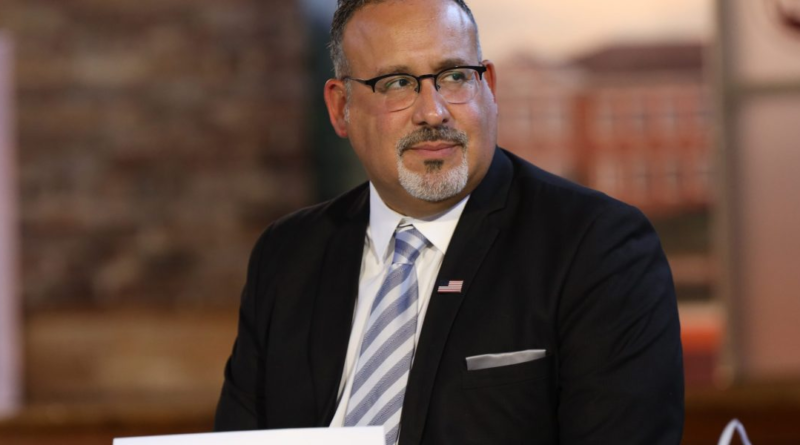The Biden administration’s FAFSA stumble is screwing over administrators and threatening college enrollment: ‘This is doing exactly the opposite of what the entire intention of financial aid is’
Over the past year, the Department of Education has been working to redesign the Free Application for Federal Student Aid (FAFSA), the form that college students have to fill out to access federal financial aid. But the rollout has backfired dramatically: Monthslong processing delays are straining already-overworked college financial aid departments, some of whom predict that late financial aid offers could decrease enrollment numbers nationwide next fall.
“This is doing exactly the opposite of what the entire intention of financial aid is: for students to go to college,” Brenda Buzynski, director of student financial aid at the University of Iowa, told Fortune.
College aid officers say that repeated holdups and a lack of communication from the Education Department are forcing them to work around the clock and give up their spring break to get students access to aid packages in time. They say that if students don’t know how much college will cost them before the federal May 1 enrollment deadline, some of them—especially first-generation, low-income students who tend to rely more heavily on federal aid—will just decide against college, reversing a post-pandemic enrollment bump.
The Biden administration’s Department of Education has made reducing college debt a big priority, pushing to forgive $5 billion in outstanding student loans. But when it comes to actually keeping college affordable, has it taken its eye off the ball?
Yesterday, the Education Department announced it would set aside $50 million to finish the FAFSA transition by deploying federal personnel. But it could be too little, too late for a messy policy rollout that’s already putting a strain on financial aid officials and college students and their families across the country.
The Biden administration passed the FAFSA Simplification Act in 2020 in an effort to streamline the aid application process for students and their families and expand access to federal money. But in the three years since, the redesign has been marred with headaches.
The Department of Education has pushed back its projected timeline a full four times after repeated delays. Last December, the Washington Post reported that the department had failed to update a major aid eligibility formula to account for inflation. Required by law to open up the new online FAFSA portal by the end of 2023, the Education Department activated the half-finished portal for less than half an hour on the final two days of the year. It’s been available intermittently since then, but some students still haven’t been able to submit applications.
The Education Department declined to comment on this story.
Colleges normally start receiving applicants’ FAFSA information in October and immediately start calculating aid packages for potential admits. But as of February, not a single college has received any applicants’ FAFSA information. The Department of Education claims it will release data to colleges by mid-March, right around the time when financial aid offices are usually finishing up for the year. That means that colleges are sizing up how to analyze applicants’ FAFSA data and calculate aid offers—a process that normally takes around five months—in a matter of weeks.
“We’re working overtime. We’re working weekends. We’re forgoing our spring breaks,” said Buzynski, whose staff deals with around 35,000 applications annually. “I continually remind my staff, ‘We all have to stay healthy.’ Nobody can get sick, right? And this is a perfect world situation, if we can even make this happen.”
The most severe impact of the tightened timeline could fall on students. In order to make an informed decision before the federal May 1 deadline to commit to enrollment, students need to know how much a year of college is going to cost them—information that might not be available by then.
“Some students may be rushed into making an enrollment decision without having a complete picture of cost from all of the institutions where they applied. Others may decide to delay their enrollment for a year until the FAFSA application process is more stable,” wrote Jill Desjean, senior policy analyst at the National Association of Student Financial Aid Administrators (NASFAA), in an email to Fortune. “But most concerning is the students who completely give up on college altogether, frustrated by the confusion and lack of clarity around this year’s process.”
Desjean said that the ends do, to an extent, justify the means: Nearly every student will receive more federal aid as a result of the FAFSA changes. But she pointed out that the Education Department has had three years to plan the rollout, and that the NASFAA had been urging the organization to address timing concerns since last fall.
“Lower-income students, who absolutely need financial aid in order to attend college, will be the most affected because they can’t make a commitment to attend a college until they have a plan in place to make it affordable,” wrote Desjean.
Some schools, especially private colleges that offer their own need-based aid, are still on track to be able to make offers to students on schedule. Kathryn Adams, director of financial aid at Gettysburg College, told Fortune that Gettysburg relies on student data provided by the College Board to calculate aid. That means that even though federal funding is still up in the air, Gettysburg has already offered tentative aid packages to its early-decision and early-action applicants.
For the more than half of all students who rely on federal aid to attend college, this administrative debacle could have far-reaching implications.
“I am very confident in our staff, and in our programming staff to do everything we can. My confidence in the [Department of Education] is wavering,” said Buzynski. “This could be a setback for first-generation or low-income students. Are they going to be able to navigate this complicated process? Or are they going to say, ‘You know what? Not this year. Let’s think about [college] next year.’”




